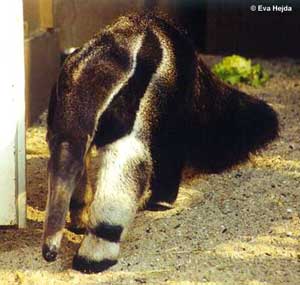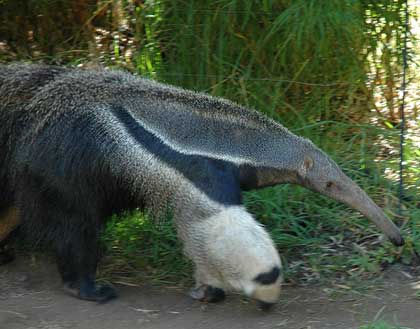The Giant Anteater is a toothless mammal that specializes in eating ants and termites, primarily found in the Americas. It has no teeth, a long snout, and when its elongated nose detects the scent of termites, it uses its foreclaws to dig into the termite mound. As the termites scatter, it extends its long tongue, which is about 30 cm long, to lick up the termites and bring them into its mouth to crush and swallow.
 |
|
(Image: naturspot) |
In tropical regions, there are swarms of carnivorous ants that move in large groups through dense forests. Any creature that encounters this army of ants can quickly be reduced to a pile of bones. However, the Giant Anteater can easily eliminate these ant hordes.
The forelimbs of the Giant Anteater are strong and robust, with long, curved claws resembling sickles. These claws serve as both a defensive weapon and a tool for digging into termite mounds for food. Due to their long and curved shape, when it walks, the palms of its front feet do not touch the ground; instead, the backs of its claws make contact, causing a rather quirky gait. It has a tail that can reach up to 1 meter long and is bushy, which can be used as an umbrella in rain or sun. At night, it can be spread out to serve as a soft sleeping mat.
The Giant Anteater breeds annually in the spring. The female typically gives birth to one offspring. During the nursing period, it is very attentive and often carries the young on its back, never leaving it alone until it is ready to bear again.
When faced with danger, the Giant Anteater attempts to escape, which can appear quite amusing. If it cannot escape in time, it will sit down, raise its claws in a defensive posture, and make strange threatening sounds.
The Giant Anteater prefers to live in areas of sparse tropical forest or grasslands, especially in lowland regions near water or swampy forests. They usually live solitary lives, hiding during the day and foraging at night.
The Giant Anteater is known for its gentle nature and poses no threat to humans or livestock.

(Image: static)


















































